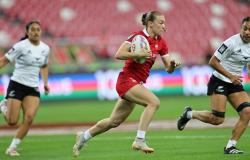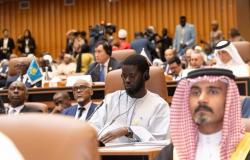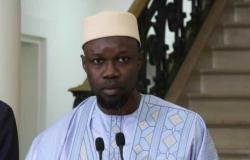
African countries aspire, in this crucial period, to a new social, economic and environmental orientation. Which can only be achieved through the emancipation of people in general and elites in particular. Often confused with the systematic rejection of the past, its history and its allies, the sovereignist desire of the African people goes far beyond this vision. It is another form of revolution, another dimension of awakening consciences, even more advanced than during the period of independence which is carried by current generations.
From this perspective, African countries are looking for a way out of the impasse encountered since independence. They are, most of the time, overwhelmed by poverty, corruption or generational conflicts. Without forgetting the ethnic and regionalist problems. In short, after more than 60 years of independence they still remain deeply divided. Whether inside or outside their borders. Regional and pan-African institutions struggle to contribute to the development of States.
In this search for solutions, are the governments of African countries making the right choices, are they making timely and realistic decisions?
Today, two countries linked by history and geography appeal to us: Guinea and Senegal. Guinea Conakry and Senegal are two distinct and sovereign countries. Each having certain economic, social and environmental assets. A combination of these assets could be a dream model. They have in common a solid and natural “economy and wealth” bloc which has been disintegrating for years due to lack of attention or lack of awareness on the part of States. These two distinct and sovereign countries could, through harmonized actions, become a prosperous and efficient economic model in the sub-region. Whether we are Guinean or Senegalese, we all like something in the other country. Shouldn’t this inspire the authorities of these states?
However, on the Senegalese side, the gaze is elsewhere: in Mauritania or the Gambia. First countries visited by newly elected President Bassirou Diomaye Faye. And the visit to Guinea? Maybe one day ! At this stage, can the absence of Guinea Conakry from President Bassirou Diomaye Faye’s agenda be analyzed as a strategic error in light of what is mentioned above? Without highlighting existing initiatives, it would, in our opinion, be appropriate for Senegal and Guinea to fairly quickly define the strategic development sectors that they could target and pool within the framework of development beneficial to both countries. We could, among others, cite the sector of crafts, agriculture, industry and culture. South-South partnerships are the most realistic these days as demonstrated by the investments of the Kingdom of Morocco.
Guinea Conakry with its national currency (outside the CFA franc zone) posted excellent ratios in 2023, confirmed by the World Bank. The country’s growth accelerated in 2023 to reach 7.1%. It would result from the good performance of the mining sector. Inflation over the same period is also estimated at 9.3%, down 2.3% compared to 2022 (see World Bank figures).
If Senegal also wishes to leave the CFA Franc zone, a look at the Guinean model cannot be ruled out. Guinea has held on to its currency since 1960. Furthermore, the return of Guinea to the OMVS, the Organization for the Development of the Senegal River, must be a priority, particularly in the context of the imminent completion of hydro-agricultural and electrical projects. For example, the Koukoutamba hydroelectric dam, located in the Labé region in northern Guinea (not far from Senegal) with a power estimated at 294 megawatts, could arouse common interest.
Does the military regime currently in place in Guinea represent an obstacle to this common project? The answer is no. The basis of economic, social and environmental development rests, above all, on the sincere will of the people and not on their political model. Several examples from around the world support this thesis. The Council of Europe is currently part of this framework with the presence of non-European countries which sit there as observers. This is currently the case of Mexico with an economic and social model very far from European reality. On the other hand, the interest lies in the exchanges and sharing of experiences. The Senegalese alternation which recently brought President Bassirou Diomaye Faye to power is a hope for the African people. The Senegalese people have succeeded in establishing and imposing political alternation where many other peoples have failed or are struggling to do so. Unless a few brave men stand up to stop the destruction of their country
History and geography are two natural strengths. Exploited they lead to an exceptional, extraordinary result and nothing can shake them. Mr. President Bassirou Diomaye Faye and General Mamady Doumbouyah, it is up to you to lay the foundations for new growth.





